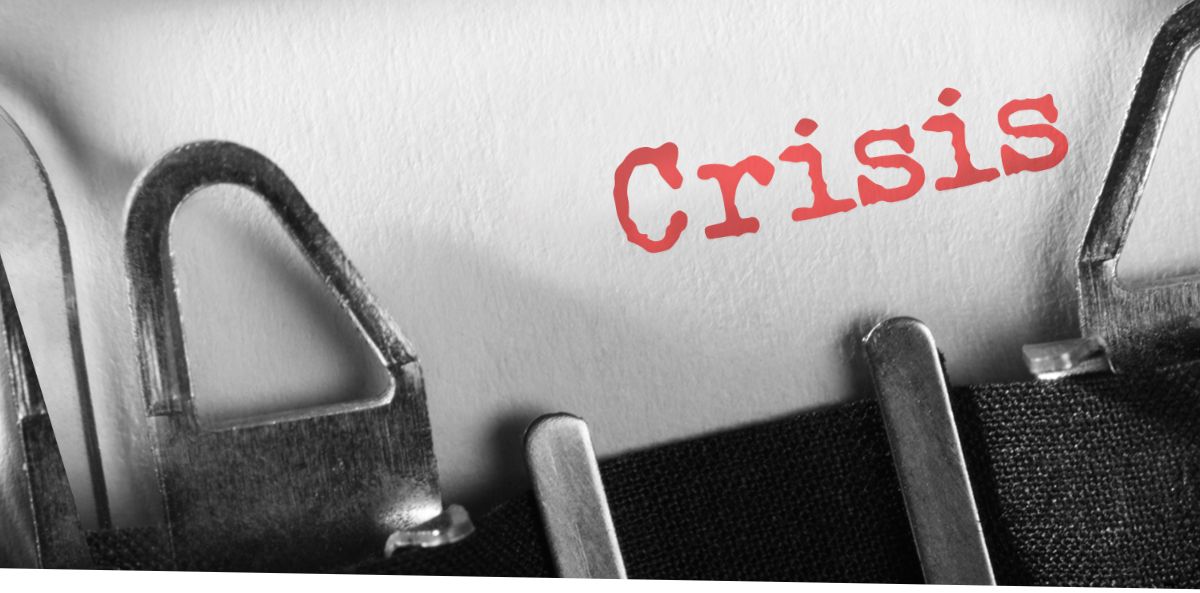I’m old enough that I watch the evening news. Sometimes.
OK, often.
Nonprofits get less than 3 minutes at the very end of 30 minutes of tragedy, political shenanigans, indictments.
The biggest headline over the past week? The government shutdown. And I am hopping mad at David Muir and all the rest of you who are covering this story.
If I see one more story or another one-minute piece of b-roll footage about Kevin McCarthy or politicians, I’ll scream.
The threat of a government shutdown – now once again less than 30 days away – is like some perverse game of Jenga. But the media presents these Jenga pieces as abstract and of minor consequence.
The Jenga pieces are about so much more than just about inconveniences at the airport or a spoiled trip to a national park.
The Jenga pieces are real people in crisis.
Shame on everyone on either side of the aisle whose power comes from those who vote, those who pay taxes, those who struggle to make ends meet, those who live with chronic illnesses.
Shame on every journalist who thinks this story is about our divisive and terrifyingly dysfunctional government.
It’s not about a thing.
It’s about people.
People struggling to make ends meet who won’t get paid – that alone should be enough to do everything possible to avoid a shutdown.
The WIC (Women, Infants, Children) program will cease immediately. This program serves 7 MILLION moms and kids.
12.5% of Americans receive SNAP benefits to supplement their grocery bills. If a shutdown goes longer than 30 days, 40 million Americans will have nowhere to turn.
Organizations that rely on government funding already experience crippling delays in receiving funds for services provided. And that is when the government is ‘working.’ 30% of the 1.5 million nonprofits in the U.S. will find themselves shutting down services because the cash just isn’t there.
WHAT CAN WE DO?
You can do what you do best. You can be advocates.
Because that is what we do.
Challenge people to think differently, be first rate storytellers about what this is really about for you.
And please do what you don’t always do best.
- Plan for crisis!
- Get out just a little bit in front of this.
- Work together.
- Activate your stakeholders.
- Be proactive with the media.
HOW TO MAKE A LOOMING GOVERNMENT SHUTDOWN ABOUT PEOPLE
- Find your 1-2 best allies in the community, folks with equal to more influence than you in the nonprofit sector and agree that there will be a meeting Monday AM. Pick a time. Zoom will be easiest to get the most people to attend.
- This strategy can also work for a movement with orgs not co-located – reproductive justice, LGBTQ and the list goes on.
- Subject Line: Nonprofits in ______<city> can NOT sit idly by during shutdown
- Sample email text:
The upcoming government shutdown puts our nonprofit community in full on crisis. Yes, we know folks have so much to do but we have to advocate for our sector and make this shutdown real for people. Stories of real people we serve are the keys to changing hearts and minds. We need E.D.s, Devo Directors and Comm folks at the table.
Join us on zoom at <time/place>. All are welcome.
Let’s be honest. Collaboration may not be our strong suit as a sector, but we are an army of advocates for those we serve. Let’s build a plan to capitalize on the leverage we have.
THE MESSAGE
Develop what you all agree works for you. Here’s what I am feeling: You need to hear what the media is not telling you. What your elected officials are not telling you. The people impacted are our clients, our neighbors, our kids, our friends. We are not pieces of a crumbling Jenga tower.
THE MESSENGER
Agree on who the lead messenger should be – is there someone of influence you can all agree on. If not, a message from every nonprofit – same one to all stakeholders – about the sector in your community and what this means for them and their neighbors.
MEDIA OUTREACH
Everyone on the call serves up a journalist and contact info. Make a list – doesn’t have to be ambitious. (But of course if someone knows David Muir, that would be kinda great.) You just need press. Visibility. The right kinds of stories out there.
AGREE ON A CALL TO ACTION
Do what you do best. Mobilize people! Give people an opportunity to use their voices. Make it a full on outreach campaign to:
- The office of a local elected official.
- The office of a national elected official.
- Others of influence who can influence the elected officials.
- Provide names and contact information for a key list of journalists.
Then you have to agree on the messaging. messaging. Talking points for a call or voice mail or email copy. If you need additional context, read and share this piece from the Chronicle of Philanthropy. You’ll have to subscribe to read it, but it’s free.
WORK TOGETHER, BE NIMBLE, MOVE QUICKLY
A few of your communications folks should agree to draft talking points. Don’t dawdle and don’t be territorial. Get a huge social media / email blast out ASAP. The comms folks could then meet later that day to split up pitching.
RINSE AND REPEAT
Same group meets one week later. Each org comes with data on engagement and anecdotes of success. Decide on next steps and how to continue momentum.
CAN IT WORK?
Will it be successful? Ah, depends on how you define success.
Will it end the risk of a government shutdown any sooner? I’m not naive. That should not define success.
But shoot for success metrics like
- Did you move quickly in the face of a crisis?
- Did you move quickly TOGETHER?
- How many people across all your organizations ENGAGED?
- Did you see any stories you might not have seen?
- Did any elected official mention the impact on those served by nonprofits by the shutdown as an argument to avoid or end it?
- Did organizations in your community use this opportunity to raise the visibility of the essential nature of your organizations – maybe you saw more followers? Maybe donations (but please don’t make that the headline or the call to action).
THE POWER OF WE
Let’s not underestimate the power of collective action. The government may be in disarray, but we are not.
We are a community of advocates, caregivers, and changemakers.
We are the safety net when the system fails, and we have the power to make our voices heard. So let’s use that power wisely and strategically.
Let’s not just be reactive; let’s be proactive.
Let’s not just be service providers; let’s be storytellers.
Let’s not just be organizations; let’s be a movement.
Because when we come together, we don’t just change the narrative; we change lives.
And that, my friends, is the real headline here. So, let’s make it one that everyone–David Muir included–can’t ignore.



